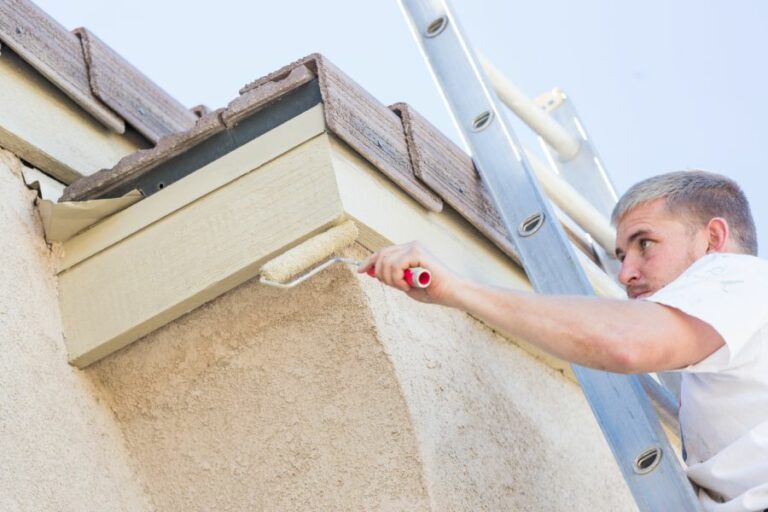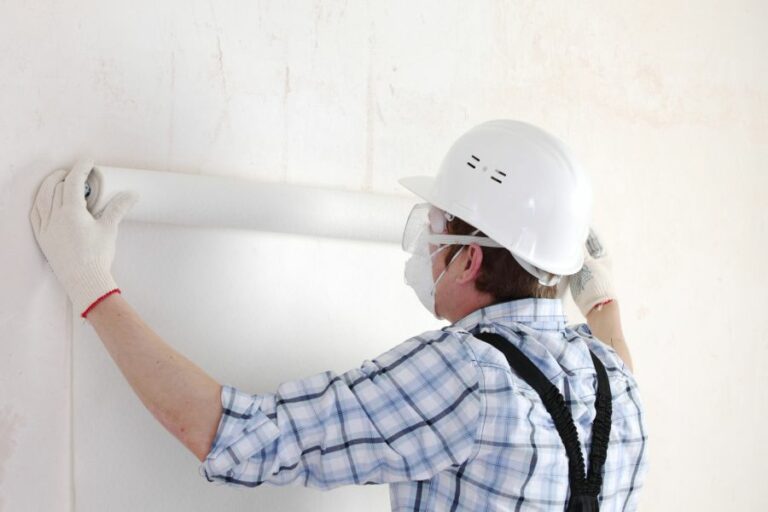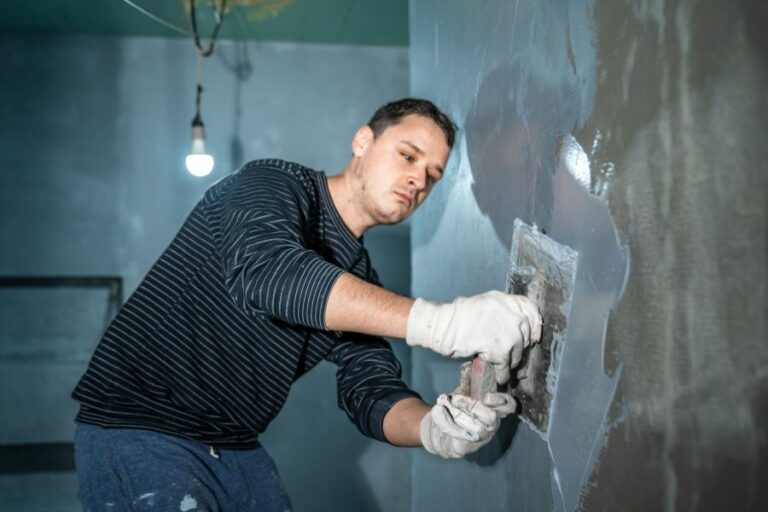The Role Of Abrasives In the Surface Preparation Process
Surface preparation is a crucial step in various industrial processes, and choosing the right abrasive plays an essential role in achieving the desired results. But how do abrasives contribute to the surface preparation process, and what factors should you consider when selecting the appropriate abrasive material?
The role of abrasives in the surface preparation process:
Abrasives are crucial in surface preparation, including cleaning, roughening, shaping, smoothing, polishing, and finishing. Their use ensures proper adhesion and bonding for various manufacturing, construction, and automotive applications. Selecting the appropriate abrasive type and size is essential for achieving desired results.

Curious about the vital role abrasives play in surface preparation processes? Continue reading to uncover how different types of abrasives impact quality, efficiency, and safety in various industries. Stay with us to learn more about achieving the perfect finish.
Contents
- 1 Significance of Abrasives in Surface Preparation Techniques
- 2 Unraveling the Crucial Aspects of Abrasive Cleaning
- 3 Delving into the Abrasive Cleaning Techniques
- 4 Exploring the Purpose of Surface Preparation Methods
- 5 Understanding the Stages of Surface Preparation Procedures
Significance of Abrasives in Surface Preparation Techniques
• An Introduction to Abrasives
Abrasives are materials used to roughen, shape, or polish surfaces. They come in various forms, such as abrasive grains, coated abrasives, nonwoven products, bonded abrasives, and super abrasives. These materials are crucial in various industries, especially in the manufacturing and construction sectors.
They ensure that a surface is properly prepared for various applications such as painting, coating, adhesion, and bonding.
The efficiency and effectiveness of an abrasive material rely on its type, size, and shape. Some common examples of abrasives include aluminum oxide, silicon carbide, garnet, glass beads, ceramic, and diamond. Let’s delve into the role that these materials play in the surface preparation process.
• Cleaning and Roughening
A key aspect of the surface preparation process is the removal of contaminants, such as rust, dirt, oil, and old coatings. This step ensures that the surface is clean, promoting strong adhesion for subsequent applications.
Abrasives play a vital role in this cleaning process, as they effectively scour and remove these contaminants.
Roughening, on the other hand, is the process of creating a slightly uneven surface profile to increase surface area, in turn allowing for improved adhesion. Again, this is where abrasives come into play.
By selecting the appropriate type and grit size of abrasive, you can create a surface profile that perfectly matches your application requirements.
From my experience, using an abrasive blasting method such as sandblasting, grit blasting, or shot blasting is highly effective in achieving these cleaning and roughening objectives. These methods employ different types of abrasives to efficiently remove contaminants and shape the surface profile.
• Shaping and Smoothing
Another role that abrasives play in surface preparation is the shaping and smoothing of surfaces. This is especially important in the manufacturing and woodworking industries, where the final shape and finish of a product are crucial to its functionality and appearance.
For instance, when manufacturing furniture, utilizing the correct abrasive can help in shaping and smoothing the wooden surfaces, facilitating a superior final product. Additionally, abrasives can be used to remove any burrs, sharp edges, or slivers that may have formed during the manufacturing process.
I recommend using coated abrasives, such as sandpaper and abrasive belts, for achieving these shaping and smoothing objectives in surface preparation. These products can be utilized with various woodworking tools, ensuring that the target surface profile and finish are achieved.
• Polishing and Finishing
The final role of abrasives in surface preparation is polishing and finishing. This involves refining the surface profile to a desired level of smoothness and/or gloss for aesthetic or functional purposes.
For example, in the automotive industry, the body of the car is polished and finished using various abrasive materials to achieve a high-gloss finish that is both visually appealing and provides additional protection for the paintwork.
In metalworking, surface polishing and finishing is important for enhancing the corrosion resistance of the final product. Using abrasive materials, such as nonwoven products, buffing compounds, and polishing wheels, can effectively achieve this desired finish.
• Selecting the Right Abrasive
Choosing the correct abrasive for your surface preparation process is crucial to achieving optimal results. Factors such as the hardness, particle shape, and size distribution of the abrasive material should be considered before making your selection.
Additionally, the specific application you are working on will also dictate which abrasive is best suited for the task.
For instance, when preparing a surface for painting, utilizing an abrasive that is too aggressive may cause damage to the substrate material, while selecting a more suitable abrasive will ensure a strong bond between the paint and the surface.
One helpful resource in selecting the appropriate abrasive is the U.S. Department of Energy’s Abrasive Selection Guide, which provides detailed information on the various types of abrasive materials and their specific applications.
• Conclusion
In summary, the role of abrasives in the surface preparation process is multifaceted, encompassing cleaning, roughening, shaping, smoothing, polishing, and finishing.
With a wide range of abrasive materials and products available, understanding the specific application and requirements of your project is critical to selecting the right abrasive to achieve the desired final outcome.
Unraveling the Crucial Aspects of Abrasive Cleaning
Abrasive cleaning is a crucial process in various industries, from manufacturing and construction to transportation and maintenance.
• Definition of Abrasive Cleaning
Abrasive cleaning is the process of using abrasive materials to remove dirt, rust, paint, and other contaminants from a surface.
These abrasive materials, also known as abrasives, can be mineral, metal, or organic and come in various forms, including sand, grit, powdered abrasives, and even water.
Abrasive cleaning can be performed using manual or mechanical methods, such as hand scraping, brushing, or using power tools and equipment.
• Functions of Abrasive Cleaning
– Surface Preparation
One of the primary functions of abrasive cleaning is surface preparation. In industries like manufacturing and construction, it is essential to prepare a surface before applying coatings, paint, or other treatments.
Abrasive cleaning can effectively remove contaminants like dirt, rust, and old paint, creating a clean and even surface that ensures a strong bond between the coating or paint and the material.
– Maintenance and Restoration
Abrasive cleaning plays a vital role in the maintenance and restoration of machinery, equipment, and structures. Over time, surfaces can accumulate grime, corrosion, and other forms of wear, affecting their function and appearance.
Abrasive cleaning can effectively remove these contaminants, prolong the life of machinery and equipment, and restore structures to their original state.
– Decontamination
In industries where maintenance and decontamination are crucial, such as the nuclear, chemical, and pharmaceutical sectors, abrasive cleaning is indispensable.
These industries require the elimination of hazardous materials, such as radioactive particles, from surfaces to meet regulatory requirements and ensure worker safety. Abrasive cleaning can effectively remove these hazardous materials, making it a crucial component of decontamination procedures.
• Advantages of Abrasive Cleaning
– Versatility
The versatility of abrasive cleaning makes it an essential tool in various industries.
With a wide range of abrasive materials and techniques to choose from, abrasive cleaning can be tailored to suit the specific needs of a project, whether it is cleaning delicate surfaces, like glass, or robust materials, concrete, and steel.
– Efficiency
Abrasive cleaning is a highly efficient way to remove contaminants from surfaces. With the proper selection of abrasive materials and techniques, it can quickly clean surfaces without causing damage. This makes it an ideal method for industries where time is critical, such as manufacturing and construction.
– Cost-Effectiveness
When compared to other cleaning methods, abrasive cleaning can be more cost-effective over time. Although the initial cost of abrasive materials and equipment may be high, the savings in labor and maintenance expenses can offset these costs, making it an economical choice overall.
– Environmentally Friendly
As environmental concerns continue to rise, industries are seeking environmentally friendly ways to clean surfaces. Abrasive cleaning offers an alternative to chemical cleaning methods, which can harm the environment and pose risks to human health.
By using natural abrasive materials, such as sand or crushed walnut shells, abrasive cleaning can be a more environmentally friendly option.
• Recommendations and Precautions
While abrasive cleaning is an essential and effective method, it is essential to take some precautions and recommendations into account to ensure the best results and avoid potential damage.
- Choose the proper abrasive material and technique for the specific application. Mismatching the abrasive and the surface can lead to damage or ineffective cleaning. Consult an expert or refer to industry guidelines for recommendations on the best abrasive materials for specific applications.
- Always wear protective equipment when performing abrasive cleaning, such as safety goggles, gloves, and face masks. Abrasive materials can cause injury or respiratory issues when improperly handled.
- Perform regular maintenance on abrasive cleaning equipment to ensure optimal performance and prolong its life.
In conclusion, abrasive cleaning is a crucial process in various industries due to its versatility, efficiency, and cost-effectiveness.
By understanding its functions and advantages and following recommended procedures and precautions, abrasive cleaning can greatly improve the quality and lifespan of machinery, equipment, and structures.
Delving into the Abrasive Cleaning Techniques
• Introduction to the Abrasive Cleaning Process
Abrasive cleaning refers to the process of using an abrasive material to clean a surface effectively. It is a widely used method in various industries and fields.
From remediating contamination to maintaining essential equipment or prepping manufacturing surfaces, this versatile process proves its value time and time again.
• Types of Abrasive Cleaning Methods
– Dry Abrasive Cleaning
Dry abrasive cleaning, also known as abrasive blasting, is the most common type of abrasive cleaning method. It involves directing a high-pressure stream of abrasive material toward a surface. This action is performed using specialized equipment, such as a blasting nozzle.
The abrasive materials frequently used in this process include sand, glass beads, steel shot, and aluminum oxide.
– Wet Abrasive Cleaning
Wet abrasive cleaning, also known as wet blasting or slurry blasting, is similar to dry abrasive cleaning but involves mixing the abrasive material with water.
This technique helps to reduce dust and heat generated during dry blasting, which can be particularly useful when working with sensitive surfaces or in confined spaces.
– Abrasive Cleaning Using Brushes and Pads
Another approach to abrasive cleaning is using brushes or pads made from abrasive materials. This technique is often employed in smaller-scale, localized cleaning operations or for delicate or intricate surfaces that require precision cleaning.
• Key Advantages of Abrasive Cleaning
– Efficiency and Speed
Abrasive cleaning is a fast and efficient method for removing different types of contaminants, such as rust, paint, or oxide layers, from a surface. By choosing the right abrasive material and adjusting the cleaning parameters, large surfaces can be freed from unwanted deposits in a short amount of time.
– Versatility
The abrasive cleaning process can be customized easily by changing the type or particle size of the abrasive material, as well as varying the pressure or angle of impact. This adaptability makes it suitable for various surfaces, ranging from metal and wood to glass and ceramics.
– Surface Preparation
In addition to cleaning, abrasive cleaning can also be employed in surface preparation tasks, such as roughening a surface to promote adhesion or removing burrs and sharp edges from machined parts.
– Environmental Friendliness
Abrasive cleaning methods, particularly those using water or environmentally friendly abrasives, can be a greener alternative to chemical cleaning processes. By minimizing the use of harmful chemicals and reducing waste, these processes contribute to a cleaner and safer environment.
• Applications of Abrasive Cleaning
– Industrial Cleaning
In industrial settings, abrasive cleaning is an essential tool for maintaining and rehabilitating equipment and infrastructure. It can be used to clean heat exchangers, pipes, tanks, and even large structures, such as bridges and water towers.
– Restoration and Conservation
The abrasive cleaning process is frequently employed in the restoration of buildings and monuments, particularly those made from stone, brick, or metal.
By removing layers of accumulated dirt or corrosion, the original appearance of these structures can be restored safely without damaging the underlying material.
– Automotive and Aerospace Industries
In the automotive and aerospace industries, abrasive cleaning is used for surface preparation prior to painting or applying coatings, as well as for maintenance and repair of parts and components.
– Electronics and Semiconductor Manufacturing
Abrasive cleaning techniques, such as precision blasting or brush cleaning, are used in electronics and semiconductor manufacturing for cleaning and preparing delicate surfaces, such as silicon wafers or printed circuit boards, without causing damage.
• Recommendations and Best Practices
- Always choose the appropriate abrasive material, pressure, and technique for the specific cleaning task at hand, considering the type and condition of the surface being cleaned.
- Use environmentally friendly abrasives and processes whenever possible to minimize negative impacts on the environment.
- Wear adequate personal protective equipment, including eye and hearing protection, during abrasive cleaning operations to prevent potential injuries.
- When working on large surfaces, consider dividing them into smaller sections to maintain a consistent cleaning quality and pace throughout the process.
- Regularly inspect and maintain abrasive cleaning equipment to guarantee its proper functioning and avoid any potential hazards during operation.
In conclusion, the abrasive cleaning process is an incredibly versatile and useful method for various industries and applications. By understanding its principles and benefits, as well as adhering to best practices, we can ensure that we utilize this technique safely and efficiently in our work.
Exploring the Purpose of Surface Preparation Methods
Surface preparation refers to the process of treating, cleaning, or conditioning various types of surfaces before applying a new coating, adhesive, or sealant.
This is a crucial step in many manufacturing, construction, and maintenance practices, as the performance and durability of the final product often depend on the effectiveness of surface preparation.
• Enhancing Adhesion
One of the primary functions of surface preparation is to improve the adhesion between the substrate (the surface being prepared) and the material being applied.
Proper surface preparation helps to eliminate dirt, dust, grease, and other contaminants that can hinder the binding of adhesive, coating, or sealant to the surface.
A well-prepared surface ensures that the applied material adheres properly and consistently, leading to a longer-lasting and higher-performing final product.
• Preventing Failures and Repairs
Another significant function of surface preparation is to help prevent premature failure and costly repairs. An inadequately prepared surface can lead to problems such as blistering, peeling, or delamination, which will eventually require expensive and time-consuming maintenance work.
By investing time and effort into surface preparation, these issues can be effectively minimized or avoided altogether, leading to increased longevity and lower future maintenance costs for the final product.
• Preserving Aesthetics
Surface preparation also plays an important role in preserving the aesthetics of the finished product. Proper surface preparation can help to create a smooth, uniform surface free of imperfections or irregularities.
This is particularly crucial in applications where the visual appearance of the final product is of significant importance, such as in automotive painting, architectural coatings, or luxury goods manufacturing.
• Ensuring Safety
Safety is another vital aspect to consider during the surface preparation process. Properly prepared surfaces can help prevent accidents by providing a consistent, non-slippery surface that reduces the likelihood of accidents caused by slips and falls.
This is especially important in industries such as construction, manufacturing, and even in homes where steps, ramps, and flooring can pose potential hazards.
• Common Techniques for Surface Preparation
There are several techniques used for surface preparation, depending on the specific requirements of the project and the characteristics of the material being applied. Some of the most common methods include:
- Abrasive blasting: Also known as sandblasting, this method uses high-pressure air to propel abrasive particles against the surface, effectively removing contaminants and creating a roughened surface for improved adhesion.
- Chemical cleaning: This technique involves the use of solvents, detergents, or other chemical agents to dissolve and remove contaminants from the surface.
- Mechanical cleaning: Tools such as wire brushes, scrapers, or grinders are used to physically remove dirt, rust, or old coatings from the surface.
- Acid etching: A process that uses acid solutions to remove surface contaminants and create a textured surface profile, typically used on concrete surfaces before the application of coatings or sealants.
• Best Practices for Surface Preparation
Here are some recommendations based on years of experience in the field:
- Assess the surface condition: Before starting the preparation process, it is necessary to evaluate the type of contaminants and their severity to select the appropriate cleaning method and materials.
- Choose the right method: There’s no one-size-fits-all solution for surface preparation. Selecting the most effective method for your specific project is essential, considering factors such as material type and project requirements.
- Follow industry standards: Adhering to industry standards and guidelines established by organizations such as the International Concrete Repair Institute (ICRI) and the Society for Protective Coatings (SSPC) helps ensure that the preparation process leads to optimal results.
- Use proper safety procedures: Always use appropriate personal protective equipment (PPE) and follow established safety procedures to minimize potential health and safety risks.
- Monitor surface cleanliness: Continuously evaluate the cleanliness level of the surface throughout the preparation process. This can be done using visual inspections, adhesion tests, or other evaluation methods to ensure the desired level of cleanliness is achieved.
In conclusion, surface preparation plays a pivotal role in the longevity and performance of the final product. By investing time and effort into the preparation process, businesses and private individuals alike can ensure better adhesion, reduced maintenance costs, and increased safety.
As with anything, due diligence and adherence to industry-standard best practices can make all the difference.
Understanding the Stages of Surface Preparation Procedures
Surface preparation is a critical process in the application of coatings, adhesives, and sealants. Properly prepared surfaces can ensure the success of the project, improve durability, and ensure a high-quality finish.
• Importance of Surface Preparation
Before discussing the steps involved in preparing a surface, it is important to understand the importance of proper surface preparation. An improperly prepared surface can lead to premature failure of the applied material, resulting in the need for costly rework or repairs.
• 1. Assessing the Surface Condition
The first step in surface preparation is to assess the current condition of the surface. This will help you determine the type and extent of work required to achieve the desired results. Surface condition assessment should include the following:
- Identifying any existing coatings, adhesives, or sealants
- Checking for the presence of visible defects such as cracks, holes, or other imperfections
- Evaluating the surface cleanliness, including the presence of dust, dirt, grease, or other contaminants
- Determining the substrate’s composition and characteristics, including hardness, porosity, and moisture content
• 2. Cleaning and Removing Contaminants
Thorough cleaning of the surface is essential for proper adhesion of coatings, adhesives, or sealants. The following cleaning methods can be used:
– Dry Cleaning
This method includes sweeping, vacuuming, or using compressed air to remove loose debris and dust from the surface.
– Solvent Cleaning
Solvent cleaning uses chemicals to dissolve and remove contaminants such as oil, grease, and wax from the surface. It is crucial to select the appropriate solvent for your specific surface and follow safety precautions during use.
– Detergent Cleaning
Detergent cleaning involves using a solution of water and a suitable detergent to remove dirt, grime, and other contaminants. After cleaning, the surface should be rinsed thoroughly with clean water to remove any residue.
• 3. Removing Existing Coatings or Materials
When new coatings, adhesives, or sealants need to be applied over existing materials, it is essential to remove them to ensure proper adhesion. Common methods for removing existing materials include:
– Mechanical Removal
Mechanical removal techniques include scraping, sanding, and grinding. These methods can be performed manually or using power tools. Abrasive blasting is another option that uses high-pressure jets of abrasive material to remove paint, rust, or other coatings.
– Chemical Removal
Chemical removal involves the use of paint strippers, solvents or other chemicals to soften and dissolve existing coatings, allowing them to be scraped or wiped away.
– Thermal Removal
Thermal removal involves using heat to soften or burn off existing coatings. This method can include using heat guns or torches. It is important to follow safety precautions when using these methods, as they can present a fire hazard.
• 4. Surface Profiling
Achieving the correct surface profile is essential for proper adhesion of coatings, adhesives, or sealants. Surface profiling methods vary depending on the substrate and desired surface roughness. Techniques include:
– Abrasive Blasting
This method uses high-pressure air to propel abrasive particles against the surface, creating a roughened profile suitable for proper adhesion.
– Surface Grinding
Surface grinding is a mechanical process that uses abrasive wheels or disks to remove a thin layer of the substrate, providing a smooth, uniform surface.
– Acid Etching
Acid etching involves applying a solution that reacts with the substrate’s surface to create a roughened profile. Proper neutralization and cleanup are necessary after acid etching to ensure a clean, suitable surface for coating or bonding.
• 5. Inspecting and Repairing Defects
Before applying coatings, adhesives, or sealants, it is important to inspect the surface for defects such as cracks, holes, and uneven areas. Small defects can be repaired using filler or patching compounds, while more significant defects may require more extensive corrective measures, such as replacing damaged substrate materials.
• 6. Final Surface Preparation
Once the surface has been cleaned, existing materials have been removed, the correct profile has been achieved, and defects have been repaired, the final step in surface preparation is to ensure that the surface is thoroughly clean and dry.
All dust, debris, and residue must be removed, and moisture content should be within acceptable limits. Depending on the specific materials being used, additional surface treatments such as primers, bonding agents, or sealers may need to be applied to achieve optimal results.
In conclusion, taking the time to follow these essential steps in surface preparation can ensure the success of your coatings, adhesives, or sealants application project.
Proper surface preparation significantly improves the durability and appearance of the finished product while also minimizing the risk of future failures and costly repairs.
Step | Description |
|---|---|
1. Clean the Surface | Remove any dirt, grease, or grime from the surface using appropriate cleaning methods. |
2. Remove Rust and Old Coatings | Eliminate any rust, old paint, or other coatings through methods such as scraping, sanding, or using chemical stripping agents. |
3. Repair Damaged Areas | Fix any damaged areas, such as filling holes, cracks, or imperfections, using suitable materials like filler or epoxy. |
4. Abrasion or Roughening | Create a rough surface to improve adhesion using methods like sandpaper, abrasive blasting, or etching. |
5. Priming | Apply a primer, if necessary, to achieve a better bond between the surface and the new coating or material. |
6. Final Cleaning | Perform a final clean to remove any leftover dust or debris from the surface before applying the new coating or material. |







